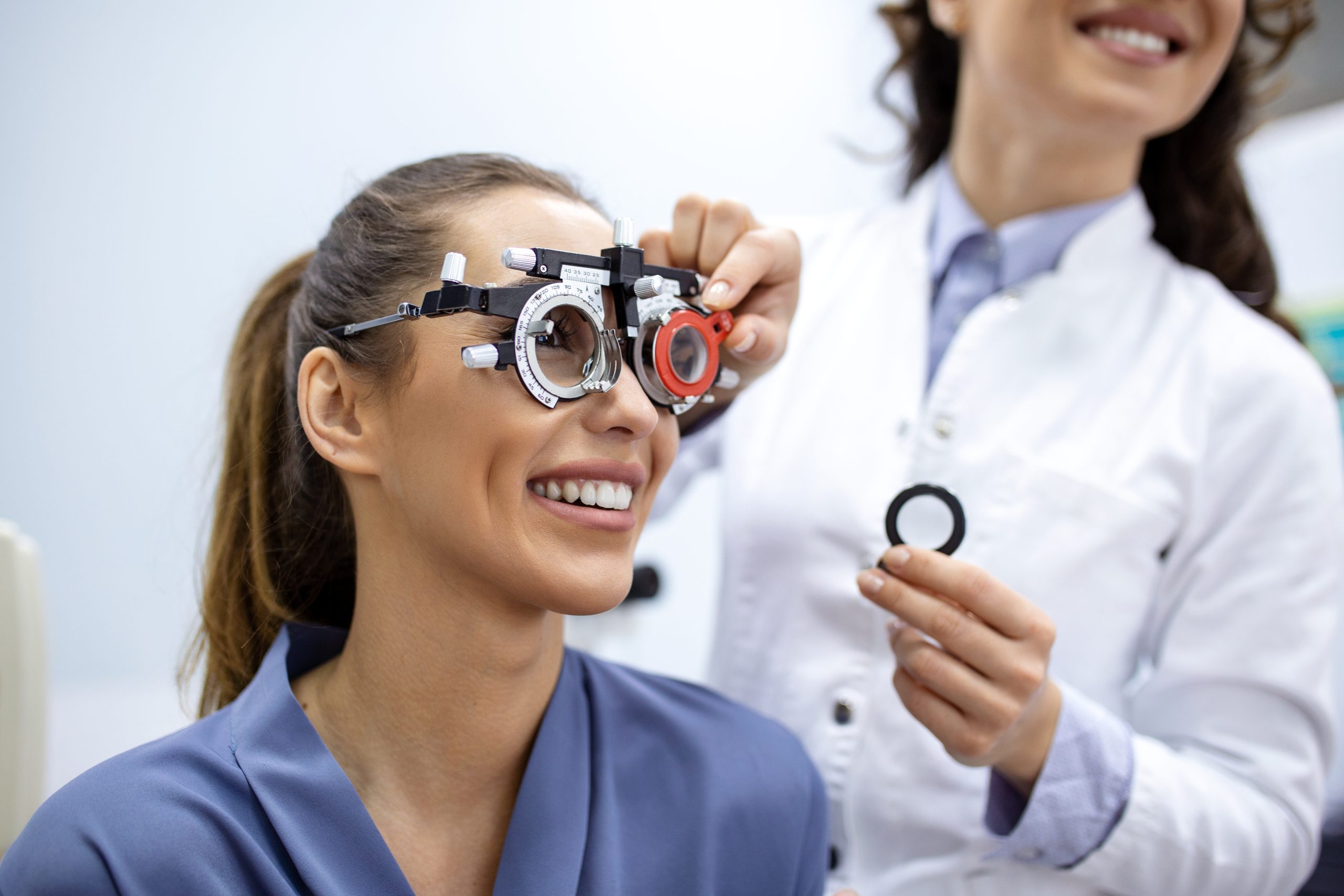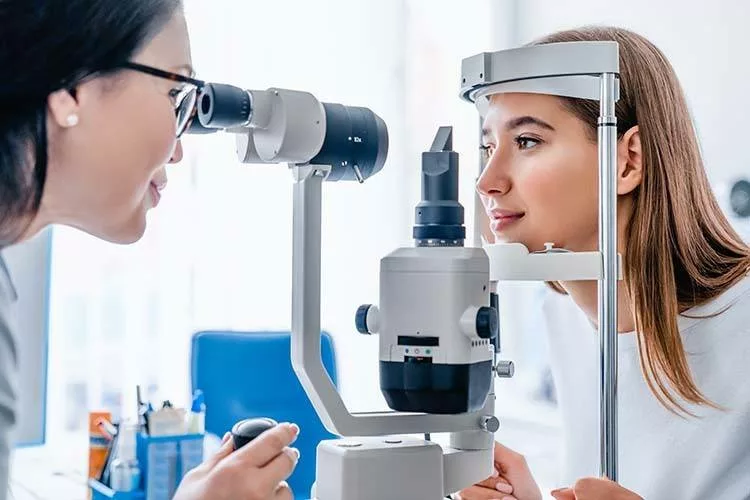Locate a Trusted Optometrist Chino for Family Eye Care Solutions
Locate a Trusted Optometrist Chino for Family Eye Care Solutions
Blog Article
Checking Out the most up to date Technological Advancements in Optometry and What They Mean for Eye Doctors
From the accuracy of Optical Comprehensibility Tomography to the nuanced insights supplied by AI-driven diagnostic devices, these technologies are establishing brand-new standards in client analysis and therapy. As these advancements penetrate the practice, optometrists are encountered with the challenge of accepting these devices to improve individual outcomes.
Advancements in Diagnostic Equipment
Advancing the area of optometry, advancements in diagnostic tools have revolutionized the way eye treatment experts assess and diagnose eye problems and visual problems. The past decade has actually observed significant technical developments, allowing even more precise and detailed examinations. Optical Coherence Tomography (OCT), for example, supplies high-resolution cross-sectional pictures of the retina, permitting the early discovery of diseases such as glaucoma and age-related macular degeneration. This non-invasive imaging technique has ended up being indispensable in modern optometric practice.
Another secret technology is the introduction of sophisticated corneal topography systems, which map the surface curvature of the cornea with precision. These tools are especially beneficial for suitable call lenses and detecting corneal conditions. Furthermore, electronic retinal imaging has changed traditional ophthalmoscopy, using comprehensive, panoramic views of the retina that facilitate detailed visual assessments.
The development of wavefront aberrometry has actually also been essential, enabling the analysis of refractive mistakes with unequaled accuracy (Eye Doctor Optometrist). This innovation helps in personalizing rehabilitative lenses and improving surgical outcomes for refractive surgical procedures. Jointly, these diagnostic improvements encourage eye doctors to supply exceptional individual care, making certain very early intervention and customized therapy techniques, ultimately boosting aesthetic wellness results
AI in Patient Administration
Structure on the structure of innovative diagnostic tools, the unification of artificial intelligence (AI) in client monitoring stands for a transformative jump for optometry. AI systems are progressively utilized to improve performance, precision, and customization in individual treatment.
In addition, AI-driven platforms assist in streamlined client communications and administrative processes. Automated organizing, virtual consultations, and customized follow-up plans not only enhance person fulfillment but also enhance time administration for practitioners. These systems can triage individuals based upon the urgency of their problems, making sure that those in vital need obtain punctual interest.
Moreover, AI enhances decision-making by offering eye doctors with evidence-based referrals and treatment pathways. By integrating information from electronic health records, AI devices use insights that notify medical choices, reducing the risk of mistakes and enhancing client results. As AI continues to develop, its function in patient monitoring will likely broaden, reshaping the landscape of optometric care.
Advancements in Retinal Imaging
In the realm of optometry, retinal imaging has experienced amazing technological advancements that are boosting diagnostic abilities and patient treatment. Advancements such as Optical Comprehensibility Tomography (OCT) and fundus digital photography have revolutionized exactly how eye doctors assess the retina and visualize. OCT, in specific, offers high-resolution, cross-sectional photos of the retina, enabling the comprehensive examination of its layers. This ability is vital for very early discovery and administration of conditions like glaucoma, diabetic person retinopathy, and age-related macular degeneration.
Improved imaging modalities like OCT angiography are more refining analysis precision. This non-invasive technique maps blood flow in the retina, offering crucial understandings right into vascular health and wellness without the demand for color shots. image source Additionally, flexible optics modern technology is being integrated into retinal imaging systems to correct ocular aberrations, providing extraordinary image quality. Such advancements assist in the recognition of min retinal modifications that can represent illness development.
Furthermore, innovations in artificial knowledge are boosting retinal imaging by allowing automatic analysis of huge datasets. These systems assist optometrists in recognizing patterns indicative of pathology, thus boosting analysis precision and efficiency. Collectively, these innovations are transforming retinal imaging into a cornerstone of modern eye treatment, improving end results and expanding healing opportunities.
Teleoptometry's Expanding Duty
Teleoptometry is significantly ending up being an essential component of eye treatment, driven by improvements in electronic communication and analysis tools. This is particularly helpful in rural and underserved locations where accessibility to specialized eye treatment is frequently minimal.
The combination of synthetic knowledge (AI) additional improves teleoptometry, making it possible for the evaluation of visual information and assisting in the detection of eye problems such as glaucoma and diabetic retinopathy. AI-powered algorithms can swiftly translate intricate imaging information, supplying optometrists with useful insights that boost scientific decision-making.
Moreover, teleoptometry sustains connection of care via smooth integration with digital health documents (EHRs), allowing eye doctors to maintain comprehensive client backgrounds. When consulting with various experts., this makes certain that individuals obtain constant and customized care even.
In spite of these advantages, difficulties stay, including ensuring data safety and security and handling individual expectations. However, teleoptometry stands for here are the findings a substantial stride in the direction of more easily accessible, efficient, and patient-centered eye care. As modern technology evolves, its function is poised to expand further.

Future Patterns in Eye Treatment
A myriad of innovative fads is readied to improve the future of eye care, driven by technical advancements and the developing demands of patients. One significant fad is the assimilation of expert system (AI) in diagnostics, which promises to boost the precision and effectiveness of eye assessments. AI formulas can assess huge amounts of data from retinal images, possibly detecting problems like diabetic retinopathy and glaucoma earlier than conventional techniques.
In addition, customized medicine is acquiring traction in optometry, with genetic screening informing customized therapy strategies. This method aims to enhance individual results by customizing interventions to specific hereditary profiles. Wearable modern technology, such as smart contact lenses, is likewise imminent, offering real-time tracking of intraocular pressure or glucose levels, therefore giving continual insights right into systemic and eye health.
The fostering of enhanced reality (AR) and virtual truth (VR) in training and client education is an additional arising trend. These innovations supply immersive experiences that can improve understanding and skills both for clients and optometrists. As these patterns progress, optometrists should remain abreast of technical improvements to supply cutting-edge treatment, ensuring Look At This better individual results and fulfillment in the vibrant landscape of eye treatment.
Verdict

Jointly, these analysis advancements empower optometrists to provide superior individual treatment, making sure very early treatment and tailored treatment techniques, eventually enhancing visual health results.

As these technologies proceed to evolve, optometrists should adapt and integrate them right into technique, eventually enhancing process effectiveness and elevating the criterion of eye care provided to individuals.
Report this page